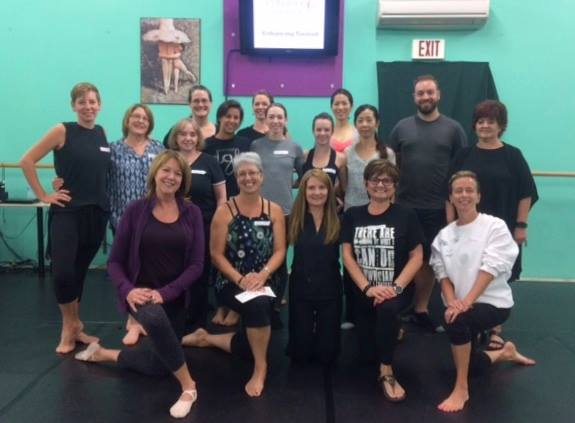Share the benefits of dancing with your dancers and their families.
SOCIAL BENEFITS "Dancers have a heightened sense of communication and social relations. Dancing promotes interpersonal knowledge, fosters relationships, and promotes social awareness. Young artists perform community service more than 4 times as often as their peers. By moving together, dancers of all ages learn the important social skills of cooperation and collaboration. They also develop a sense of inclusion, increased empathy, and respect for diversity. Dancers gain awareness of diverse cultures, values, and customs by performing dances both from their own and other societies." (Andrea Downie, 2015) Learn more in the Healthy Dancer Canada resource, Providing Support to Dancers, by Andrea Downie. Are you getting enough sleep to perform at your best?
ESTABLISH SLEEP HYGIENE "Dancers are artistic athletes and require more sleep than non-athletes, particularly during adolescence. An athlete’s sleep needs change over the course of a lifetime. Inadequate sleep and sleep disorders have been linked to the following:
Learn more about the sleep needs of athletes in Sport for Life's resource, Sleep, Recovery, and Human Performance, by Charles Samuels and Brent Alexander. Share the benefits of dancing with your dancers and their families.
EMOTIONAL BENEFITS "Dancers communicate and express feelings through movement. The emotional and mental-health benefits of regular dancing include increased self-esteem and body image; reduced anxiety, depression, and stress. Dancing can improve mood by helping those who dance feel good through the release of endorphins in the brain. Dancing cultivates intrapersonal knowledge and self-confidence. Some dancers find it is a constructive way to channel their emotions." (Andrea Downie, 2015) Learn more about the emotional benefits of dancing in the Healthy Dancer Canada resource, Providing Support to Dancers, by Andrea Downie. Looking to improve your turnout? Enhancing turnout involves gaining the necessary strength and flexibility of muscles associated with turnout, as well as attending to alignment and using imagery to facilitate effective neuromuscular patterns. Minimize turnout compensations by addressing alignment and movement patterns at the spine, pelvis, hip, knee and foot. Maximize hip external rotation by learning to recruit and organize, strengthen and stretch, the many muscles associated with producing and inhibiting turnout.
- Andrea Downie Learn more about turnout in International Association for Dance Medicine and Science's resource paper, Turnout for Dancers: Supplemental Training, by Donna Krasnow and Virginia Wilmerding. Share the benefits of dancing with your students and their families.
COGNITIVE BENEFITS "Dancers learn and express ideas through movement. Some of the benefits of dancing to cognitive development and function include: increased attention, concentration, and motivation; use of perceptual, observation and listening skills; creative-thinking, problem-solving and decision-making skills. Dancing nurtures imagination and creativity. It also encourages kinesthetic, spatial, and musical learning. Young people who regularly participate in the arts [dance] during their out-of-school hours are 4 times more likely to be recognized for academic achievement than their peers, while older people who regularly dance are 10% less likely to develop dementia." (Andrea Downie, 2015) Learn more about the cognitive benefits of dancing in the Healthy Dancer Canada resource, Providing Support to Dancers, by Andrea Downie. Looking for an advantage when it comes to turning? To improve balance control, mentally focus on alignment and do proprioceptive training, such as balancing exercises with the eyes closed. Imagine the vertical axis lengthening—simultaneously stretching up through the crown of the head and down through the supporting foot—during balancing exercises and during turns to enhance both static and dynamic alignment.
- Andrea Downie Share the benefits of dancing with your students and their families.
PHYSICAL BENEFITS "Dancers acquire numerous physical benefits from dancing regularly. Dancing uses the entire body and teaches those who dance many of the fundamental movement skills that underlie physical literacy, particularly locomotor skills like galloping and leaping, and balance movements like spinning and rolling. Dancing also supports the development and maintenance of physical fitness, specifically postural alignment, agility, balance and coordination, muscular strength and endurance, flexibility, and rhythmic abilities. Dancing can help alleviate pain and delay the effects of aging. Like all physical activity, dancing promotes physical health and longevity by postponing chronic disease." (Andrea Downie, 2015) Learn more about the physical benefits of dancing in the Healthy Dancer Canada resource, Providing Support to Dancers, by Andrea Downie. |
Archives
September 2020
Categories
All
|


 RSS Feed
RSS Feed


